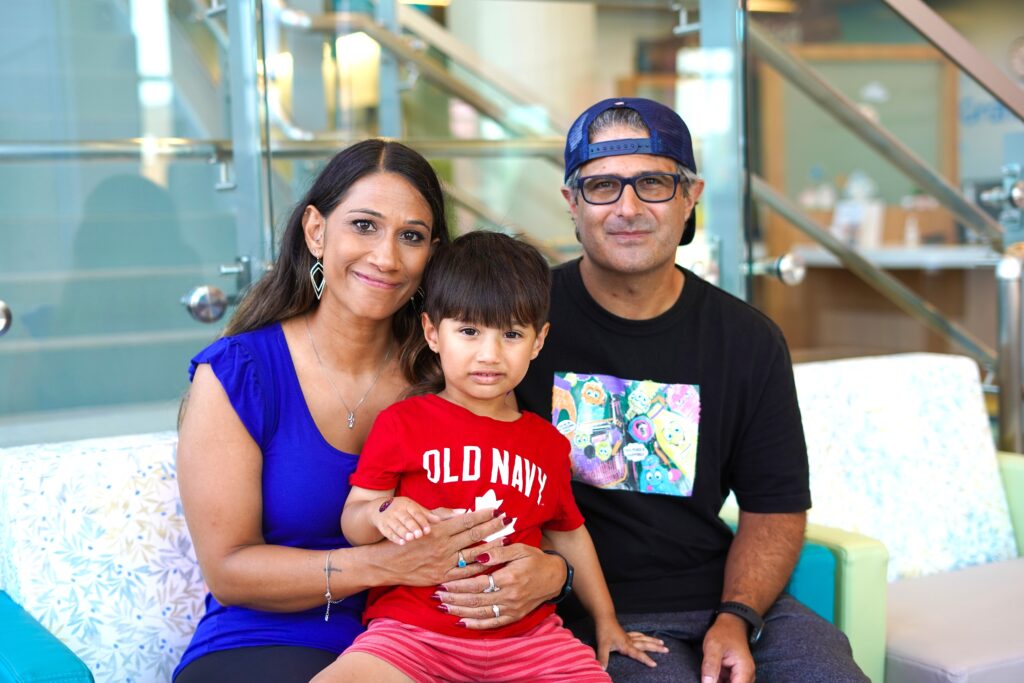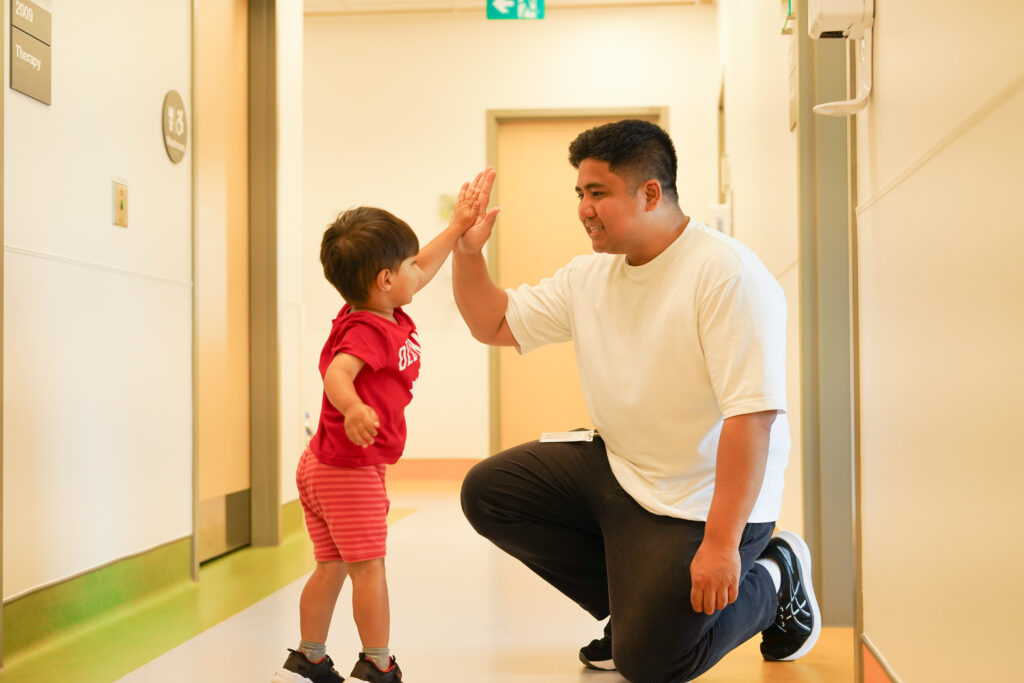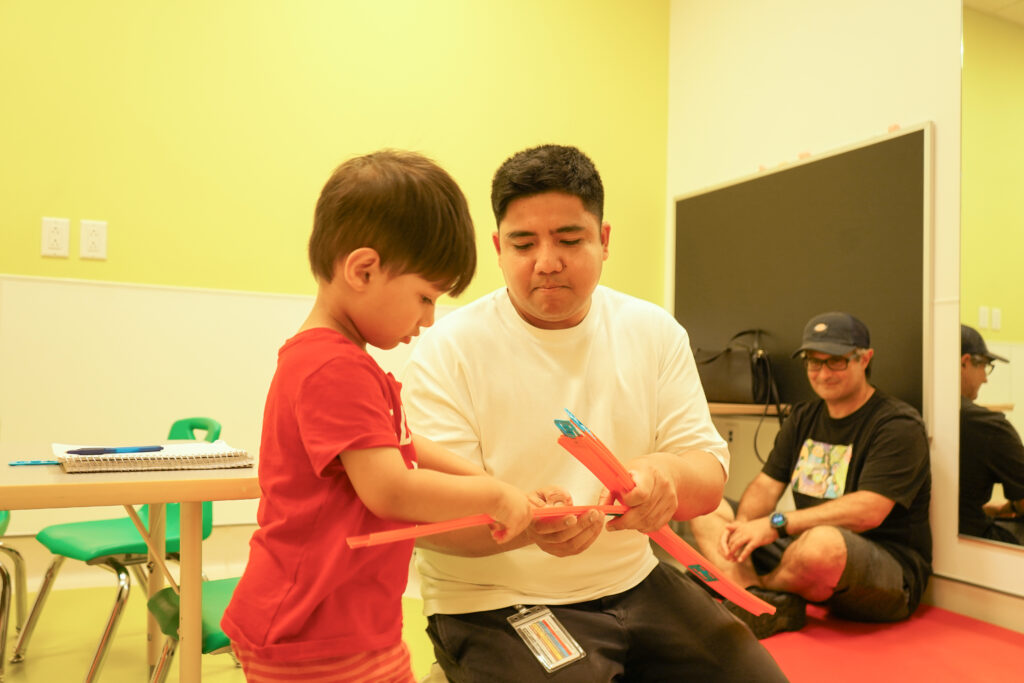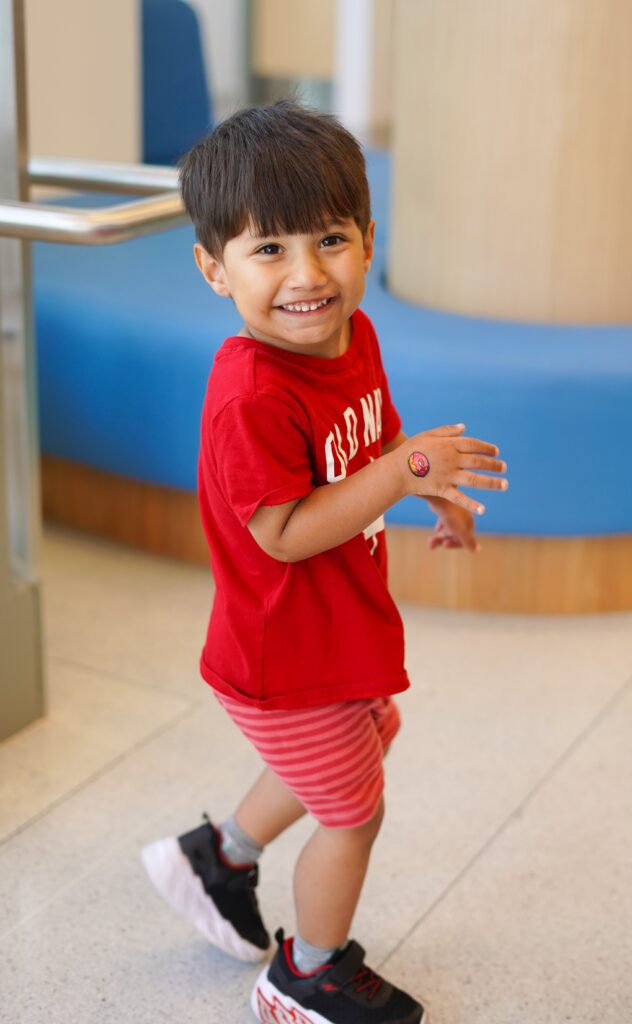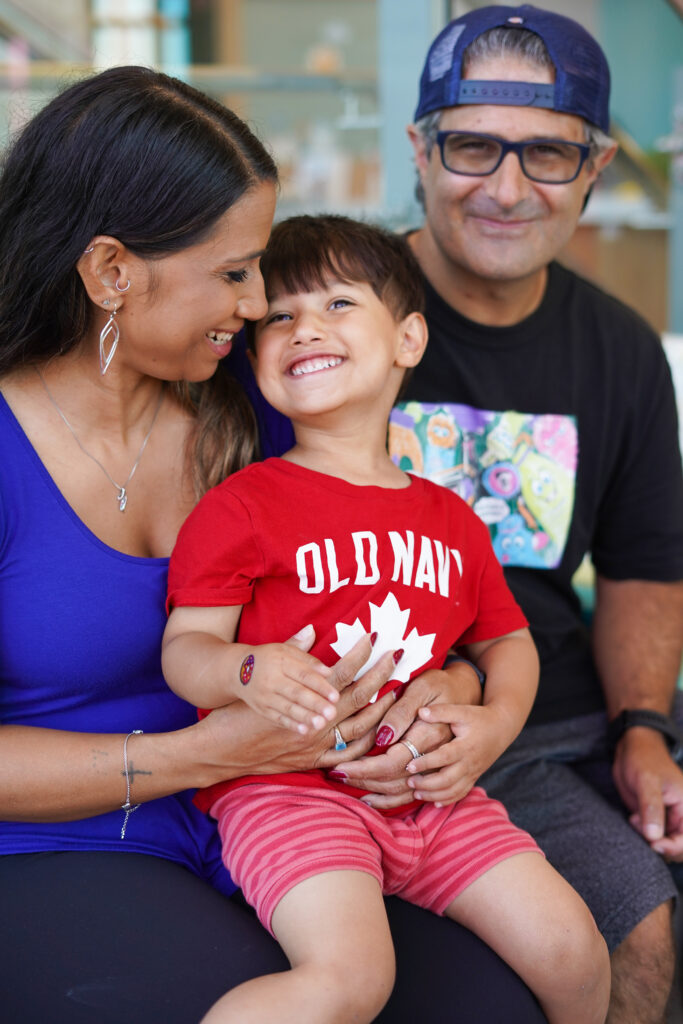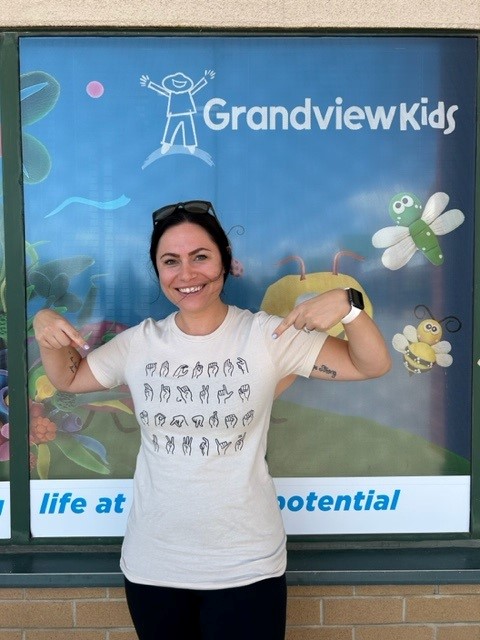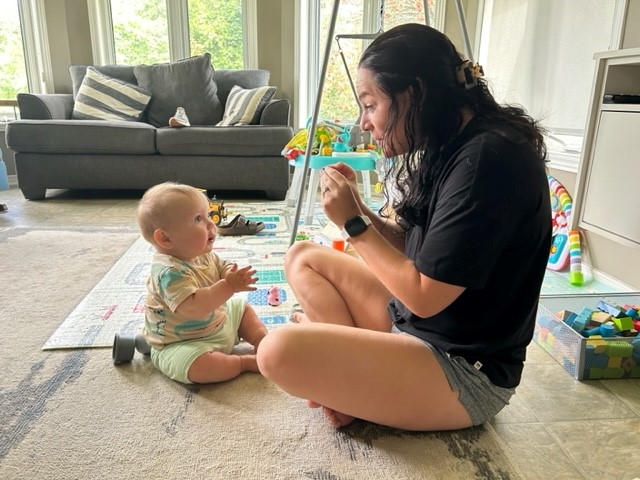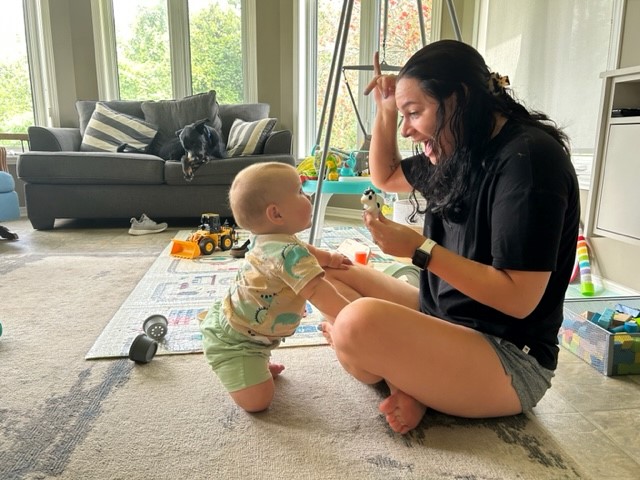Celebrating International Augmentative & Alternative Communication (AAC) Awareness Month
In a bright and busy household filled with laughter, bubbles, Doritos and Little People toys, four-year-old Charlie is the heartbeat of her family. With her younger twin sisters, Poppy and Scottlyn, by her side and the support of her parents, Kara and Scott, Charlie’s journey has been anything but typical. It is a story marked by resilience, discovery and the power of communication – however that may look like.
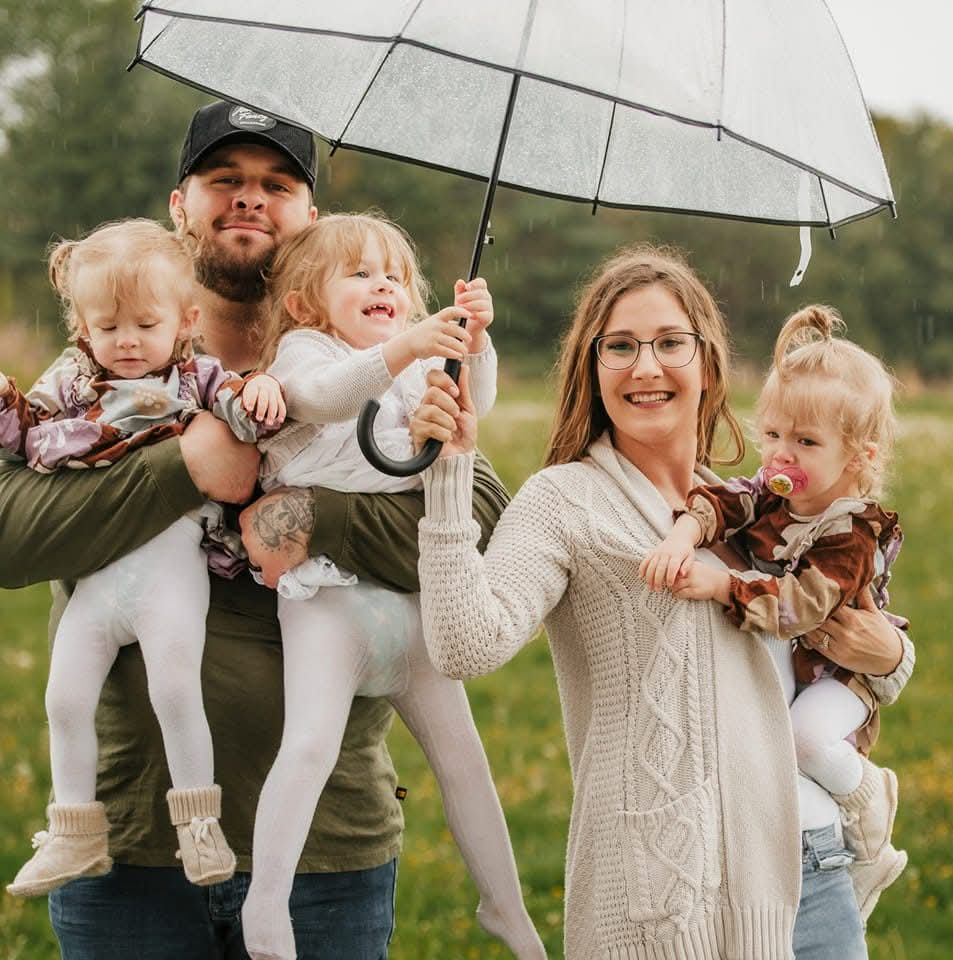
Charlie was born prematurely at 34 weeks following a difficult pregnancy. At just 15 weeks old, she underwent cataract surgery and is now blind in her left eye. “She makes up for it in so many ways, you wouldn’t even know,” Kara shares. However, early on, her parents noticed that Charlie wasn’t meeting the developmental milestones typical for her age. She was not laughing, making eye contact and had gross motor skill delays and sensitivities that seemed to overwhelm her more than most babies.
At 23 months, Charlie was diagnosed with autism spectrum disorder (ASD). “It was a lot,” Kara admits. “We had newborn twins and were navigating surgery and a diagnosis. You go from expecting the ‘usual’ parenting experience, and then everything shifts. But now, looking back, it’s truly been a blessing seeing the girls grow and thrive.”
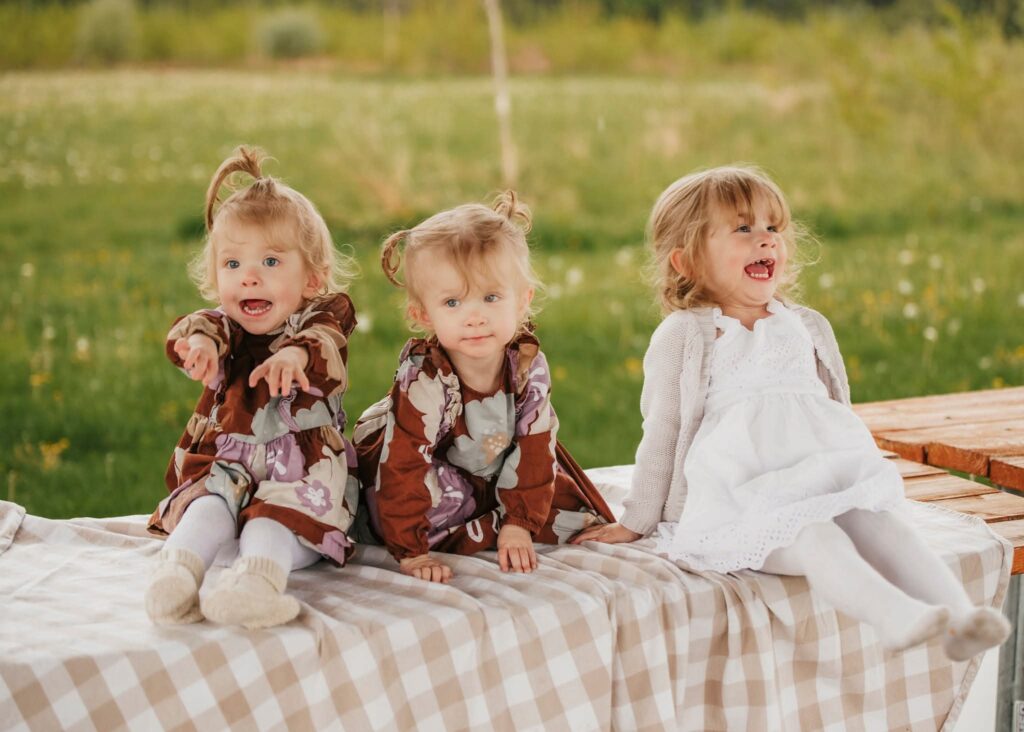
After a referral to Grandview Kids from their paediatrician, the family began accessing various services including physiotherapy, speech-language pathology and therapeutic recreation. Initially, their family tried using the Picture Exchange Communication System (PECS), a method that uses picture cards to help Charlie communicate. They were then introduced to Augmentative and Alternative Communication (AAC) with the use of an iPad, and everything began to change.
“At first, we were just guessing what Charlie needed. She would get so frustrated, and we felt helpless,” Kara recalls. “But when we started with AAC, something clicked. Seeing her go from no communication to expressing her needs and wants fast and easily was the neatest thing ever.”
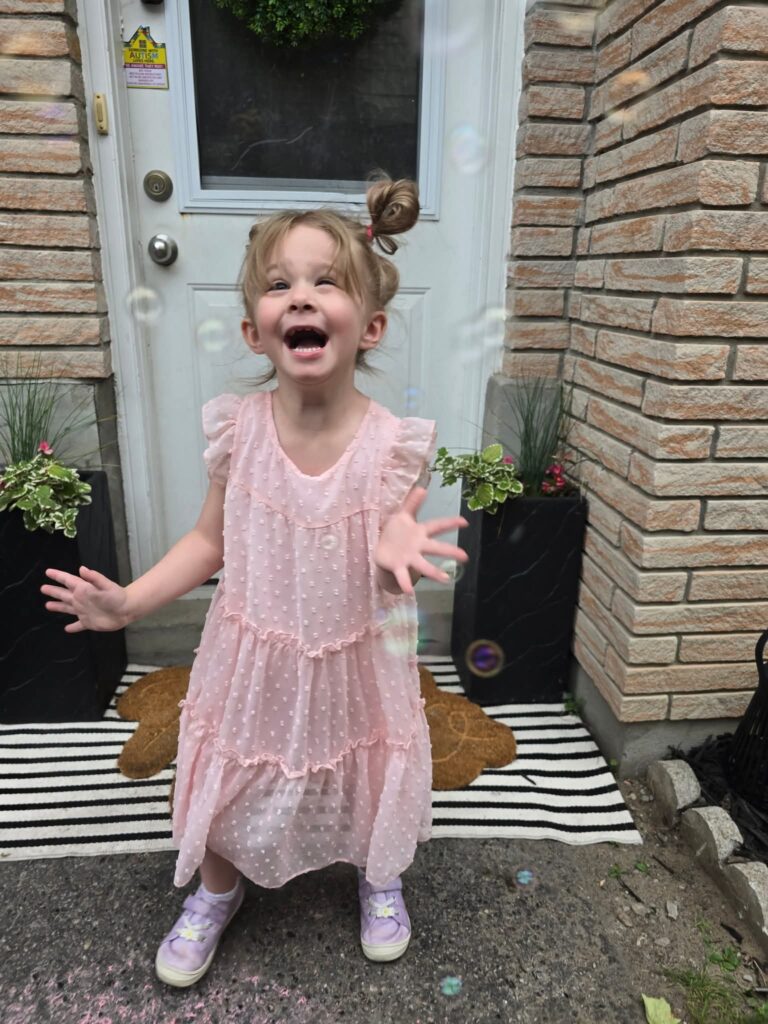
What began with a simple one-page setup of icons like “yes,” “no,” and “stop” has now blossomed into a fully unlocked AAC system. Charlie quickly mastered using the device faster than her parents expected. Through games like Red Light, Green Light and gentle prompting, she learned to navigate categories like “My Food” and “My Family,” requesting her favourite snacks or choosing which family member she wanted to visit.
“She’s a picky eater,” Kara laughs. “But with her device, she can go to ‘My Food > Favourite Foods’ and ask for exactly what she wants – no more guessing games!”
Now, Charlie uses her AAC device to interact with others, request shows, engage in play and even introduce herself. “There’s a button that says, ‘Hi, my name is Charlie, I live at…’ which gives us peace of mind, especially in public. She can tell people who she is and where she lives if she ever elopes.”
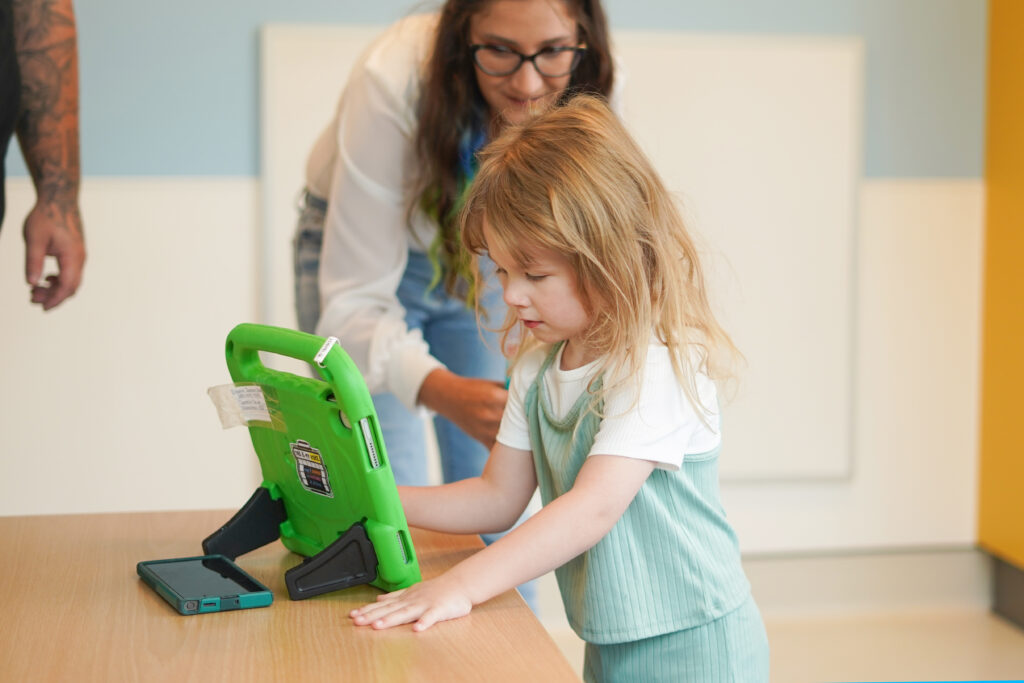
Charlie’s success with AAC has had a ripple effect within the family. All three of Kara and Scott’s daughters are diagnosed with ASD and non-speaking. One of her sisters is beginning to use PECS cards and gesture toward words, modelling after Charlie. This gives their parents hope that they will mirror Charlie’s actions and eventually use AAC devices to communicate as well.
As Charlie prepares for junior kindergarten in a mainstream public school this year, the family is encouraged by the school’s openness to AAC. Staff are committed to learning how to use the device and ensuring Charlie’s voice is heard in the classroom. “It’s emotional,” Kara says. “When we started this, we didn’t know if it would work. Now it’s opened a whole world for Charlie.” Thanks to the AAC device, she is communicating, connecting and showing her personality.
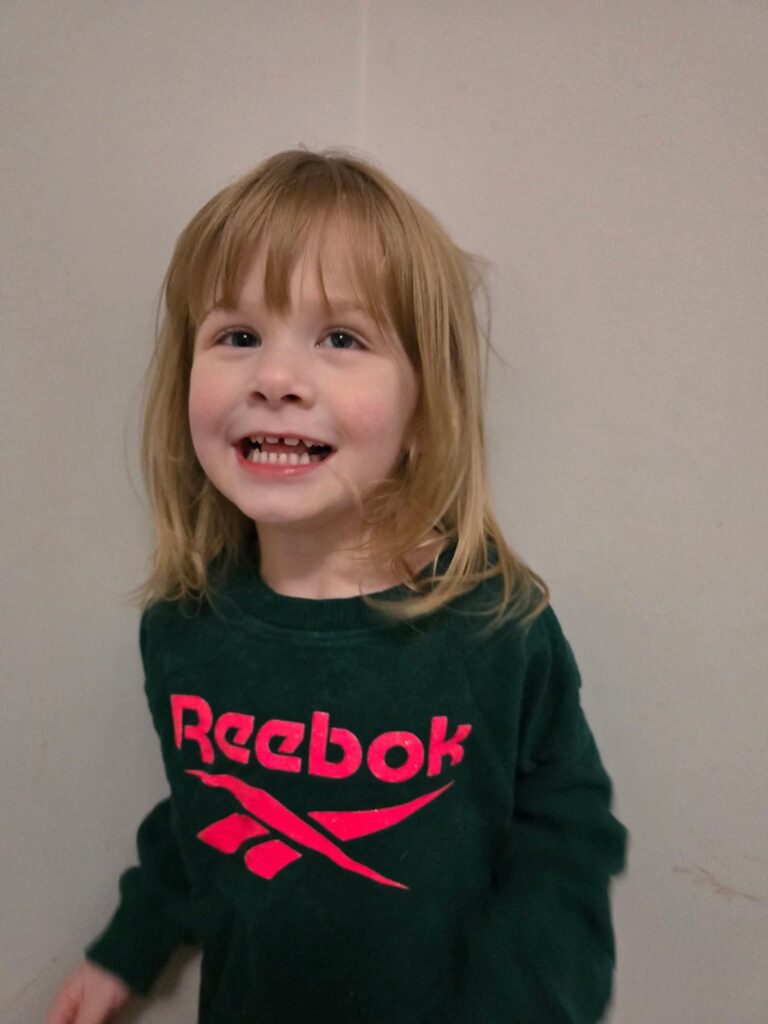
For families just beginning their AAC journey, Kara offers this message: “Don’t give up. Try every tool and option available to you: PECS cards, devices, anything. It’s all trial and error. But eventually, your child will find their way of communicating. You just have to keep planting those seeds of independence.”
AAC isn’t just a tool—it’s a bridge to connection, understanding and independence. At Grandview Kids, we believe every child deserves to be heard in their own unique way.
Learn more about AAC on our dedicated web page here!
